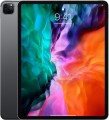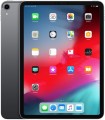Screen to body ratio
This parameter shows how much of the tablet's front panel area is on the display. The higher the display/body ratio, the thinner the frames and the more compact the tablet (with the same diagonal), the more elegant and aesthetically pleasing it looks. This indicator is also important when holding the tablet with both hands at once (for example, in games):
thin frames or even
frameless models allow you to reach further with your fingers without removing your hands from the device.
CPU
The model name of the processor installed in the tablet.
The processor is the “heart” of the device. It is he who is responsible for performing all the computing operations necessary for the normal operation of the tablet, and largely determines the overall performance. Knowing the name of a specific processor model, you can easily find detailed information on it, incl. and comparison with other models.
The most popular chips these days are from
Qualcomm(in particular, the top solutions
Snapdragon 800 series and
Snapdragon 8 series),
MediaTek(budget and “mid-range”
MediaTek Helio processors and the line of advanced
MediaTek Dimensity chipsets with 5G support), and among Windows tablets
Intel processors (mainly the
Intel Core family) are often found. Quite a rarity are branded
Kirin processors from Huawei and Honor.
RAM
The amount of random access memory (RAM) installed in the tablet. This memory is used for direct data processing, and therefore its volume is one of the main indicators of system speed and power. However note that the optimal amount of RAM strongly depends on the OS used — different systems and even different versions of the same "OS" can vary greatly in terms of consumed resources. But models on the same OS can be compared with each other in terms of the amount of RAM.
As for specific values, indicators in
1 GB or less in our time are definitely a sign of a weak tablet.
2 GB and
3 GB can be called the entry level,
4 GB and
6 GB are middle class, and in the most advanced models,
8 GB, or even
16 GB can be installed (or even more) RAM.
Storage capacity
The volume of the tablet's own built-in storage. The larger it is, the more information (programs, games, movies, photos, etc.) can be stored on the tablet without resorting to removable media, rewriting to other devices, etc. At the same time, the amount of built-in memory significantly affects the cost. Therefore, some models are available in several versions, differing only in the capacity of the drive. And the variety of built-in memory is quite wide: from
16 GB to
1024 GB with a 2-fold increase (
32 GB,
64 GB,
128 GB,
256 GB,
512 GB).
Note that this paragraph indicates the total amount of internal memory. The operating system and default programs also take up space in it; therefore, the volume of the drive actually available to the user will inevitably be less than the total.
Many tablets allow you to add memory cards to the built-in drive (see below). Such cards are relatively inexpensive, but they are much slower, and the ability to work with them may be limited by the manufacturer — for example, not all tablets with this function allow installing applications on removable media.
AnTuTu Benchmark
The result shown by a device when undergoing a performance test (benchmark) in the AnTuTu Benchmark.
AnTuTu Benchmark is a comprehensive test designed specifically for mobile devices, primarily smartphones and tablets. It evaluates the performance of the processor, memory, graphics, and input/output systems, providing a clear impression of the system's capabilities. The better the performance, the higher the score. According to AnTuTu, top models are those that score more than 500,000 points.
As with any benchmark, this test does not provide absolute precision; for more details on measurement inaccuracies, see the "3DMark Gamer's Benchmark" section.
Geekbench
The result shown by the device when passing the performance test (benchmark) Geekbench.
Geekbench is a specialized benchmark designed for CPUs. Since version 4.0, the test has also been applied to graphics accelerators; towards the end of 2019, the benchmark was released under the number "5". The characteristics of portable gadgets usually provide data specifically for the CPU. During testing, Geekbench simulates the workloads that occur when performing real-world tasks, and takes into account both the capabilities of a single core and the efficiency of multiple cores running simultaneously. Thanks to this, the final results characterize well the capabilities of the processor in everyday use. In addition, the test is cross-platform and allows you to compare the CPUs of different devices (smartphones, tablets, laptops, PCs). The help information only lists the multi-core test values for CPU.
Wi-Fi
Wi-Fi is a must for modern tablets. This interface can be used both for connecting to local networks or the Internet (via a home router, public access point, etc.), and for direct communication with other devices (for example, remote control of a camera or broadcasting video to a TV). And tablets with 3G/LTE modules (or with the ability to connect an external cellular USB modem) can also work as an access point, “distributing” mobile Internet to other devices with Wi-Fi.
The Wi-Fi standard primarily determines the maximum data transfer speed (the actual speed is usually much lower). The most modest of the current Wi-Fi 3 standards (802.11g) provides speeds of up to 54 Mbit/s, but it is considered outdated and is extremely rare as the main one. Wi-Fi 4 (802.11n) with speeds of up to 300 Mbit/s, and
Wi-Fi 5 (802.11ac)(up to 6.77 Gbit/s) have become much more widespread. Devices supporting
Wi-Fi 6 (802.11ax) and
Wi-Fi 6E are also gaining popularity, where connection speeds already reach 10 Gbps, and a number of solutions have been introduced to optimize the simultaneous operation of several devices on one router.
The latest version for 2024 is 802.11be -
Wi-Fi 7. The technology, like the previous Wi-Fi 6E, is capable of operating in three frequency ranges: 2.4 GHz, 5 GHz and 6 GHz. At the same time, the maximum bandwidth in Wi-Fi
...7 was increased from 160 MHz to 320 MHz - the wider the channel, the more data it can transmit. The IEEE 802.11be standard uses 4096-QAM modulation, which also allows more symbols to be accommodated in a data transmission unit. From Wi-Fi 7 you can squeeze out a maximum theoretical information exchange speed of up to 46 Gbps. In the context of using wireless connections for streaming and video games, the implemented MLO (Multi-Link Operation) development seems very interesting. With its help, you can aggregate several channels in different ranges, which significantly reduces delays in data transmission and ensures low and stable ping. And Multi-RU (Multiple Resource Unit) technology is designed to minimize communication delays when there are many connected client devices.
Separately, we note that, in addition to the directly specified Wi-Fi standard, modern tablets usually support a number of earlier versions. The same principle is used in most Wi-Fi equipment, so, as a rule, there are no problems with version compatibility.Main
— The number of lenses. The characteristics of the main (rear) camera of the tablet are represented primarily by the number of modules, which in most cases are 1, but there are also
tablets with a dual camera.
— Resolution. The second important factor of the camera is the number of megapixels. Many really believe that the more MP, the better the quality of filming. However, this is not entirely true: only the maximum resolution of the resulting images depends on the resolution of the matrix, and their quality is determined by many other parameters. However a large sensor resolution may be a sign of an advanced camera, but this is not necessary — two "eyes" with the same number of megapixels can radically differ in the quality of shooting.
Rear cameras in tablets may well be used for photo and video shooting; therefore, they have
cameras of 8 MP,
10 MP and even higher (
12 and
13 MP).
— Autofocus. For focus in such cameras, a movable lens system controlled by automation is responsible. It takes some time for the automation to work, and the lenses themselves turn out to be more complicated and more expensive than optics with a fixed focus (fixed lenses that are initially set to a large range of distances). However, the quality of the pictures is disproportionate
...ly higher than that of cameras without autofocus, and the systems themselves are constantly being improved, and their response time is increasingly approaching instantaneous.
— Flash. Flash significantly expands the capabilities of the camera. First of all, it allows you to shoot in low light conditions; in this case, the backlight, usually, can also be used in the constant glow mode — for video shooting. The second situation where a flash can come in handy is backlighting when the subject is in shadow. In addition, in many tablets, the flash LED can also be used as a regular flashlight, without a camera.
